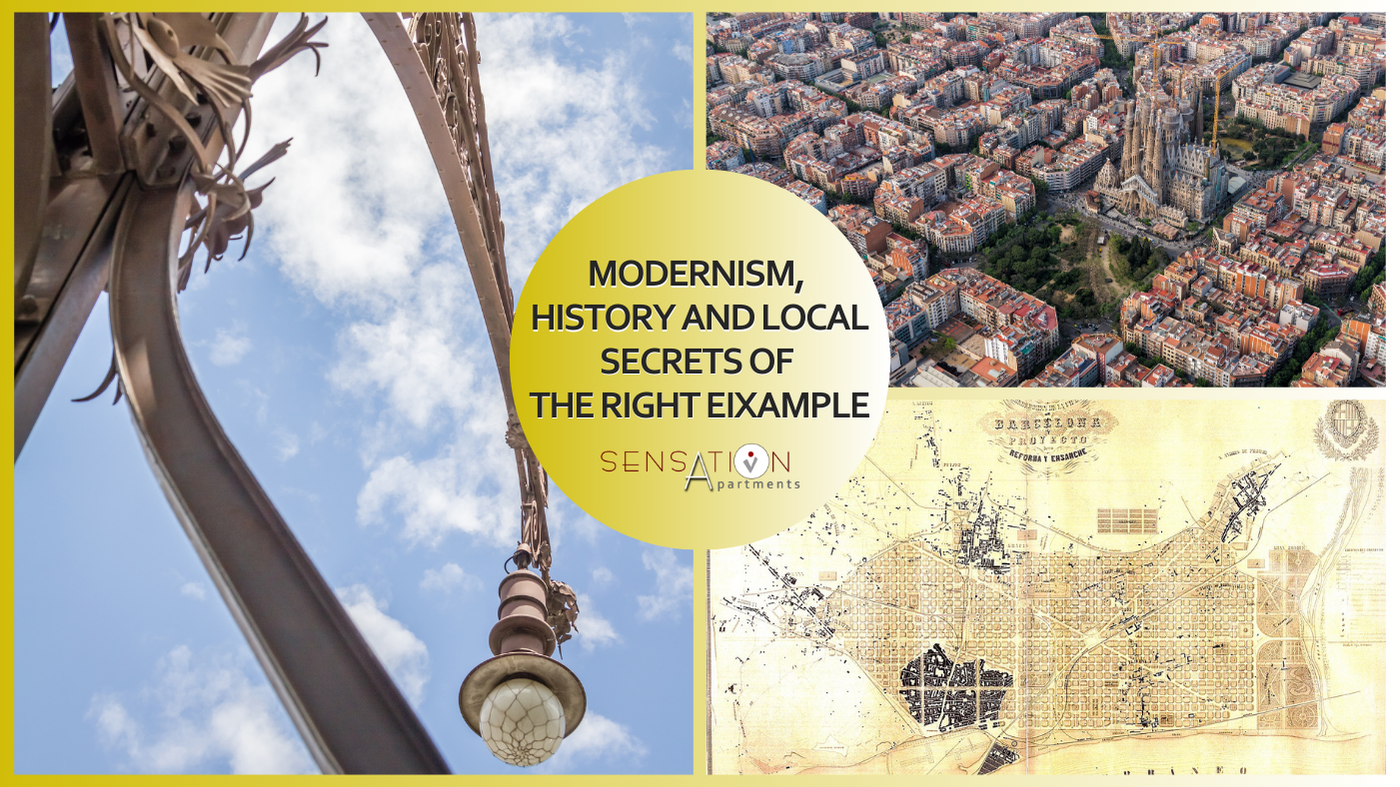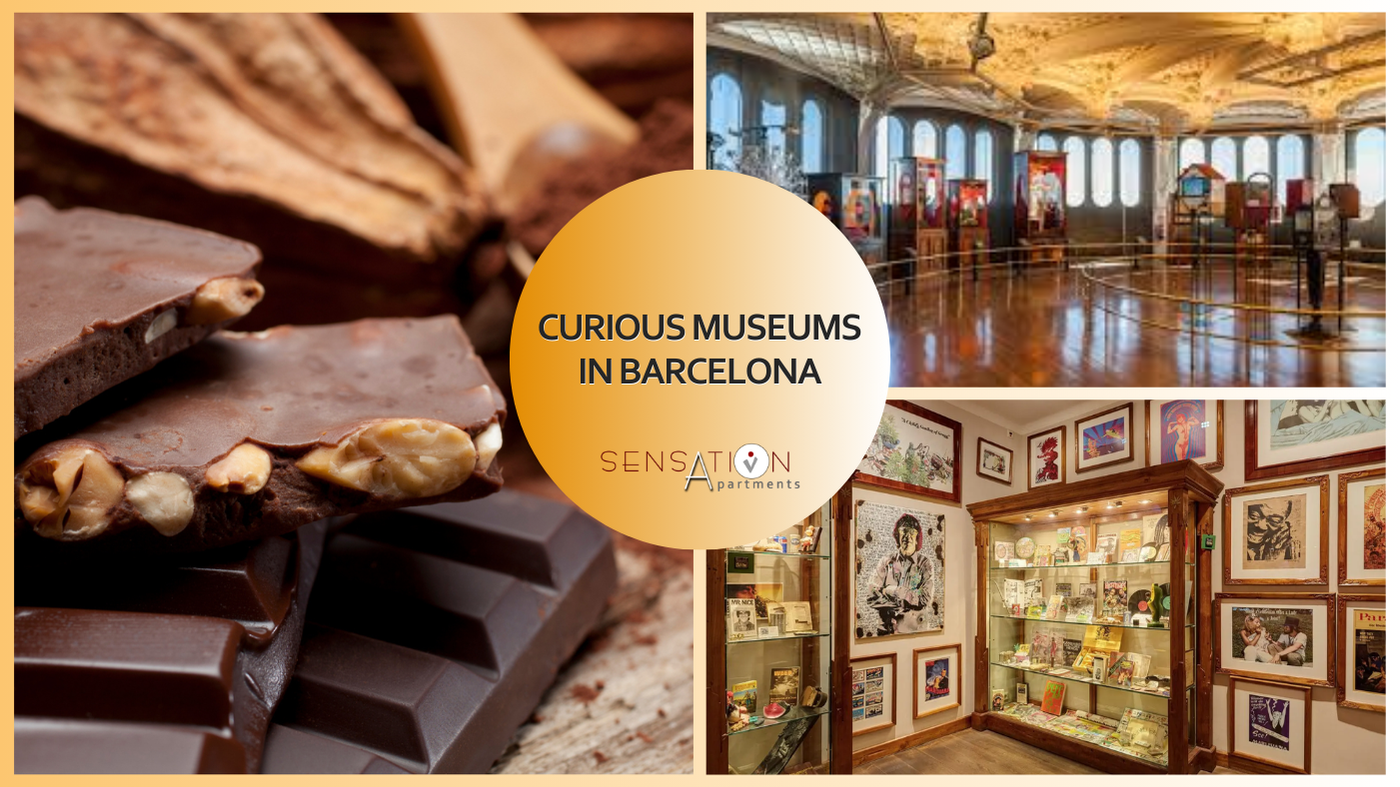Modernism, history, and local secrets of the right Eixample
Routes 23/04/2025
The Eixample is traditionally divided into two parts: the Right and the Left. The Right (to the right of Passeig de Gràcia, looking toward the mountains) was developed first and soon became a symbol of progress and modernity. It gave rise to wide avenues, octagonal blocks with interior courtyards, and a new, more orderly and healthy lifestyle.
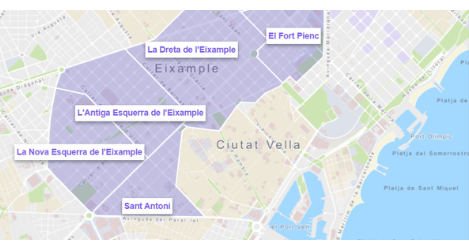
Did you know that walking through Eixample Right is like traveling back in time between modernism and urban design? Barcelona is a city of unique neighborhoods, and Eixample Right is one of the most fascinating. Elegant, orderly, and full of life, this district not only houses some of the most impressive architectural gems of Catalan modernism, but also stories, curiosities, and places with soul. Are you ready to walk its streets like a true Barcelona native?
Brief history of the Eixample Right
In the mid-19th century, the city of Barcelona began to grow beyond its medieval walls. The person responsible for designing this expansion was Ildefons Cerdà, a visionary engineer who proposed a grid-like urban structure designed to improve mobility, hygiene, and urban living.
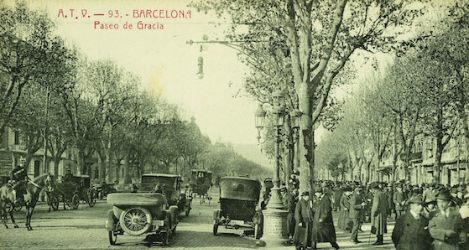
The Cerdà Plan: a revolutionary urban vision
The Cerdà Plan, designed in 1859 by engineer Ildefons Cerdà, was the basis for Barcelona's expansion beyond its ancient walls. Its goal was to create a healthier, more functional, and more accessible city, breaking away from the medieval structure of narrow, overcrowded streets.
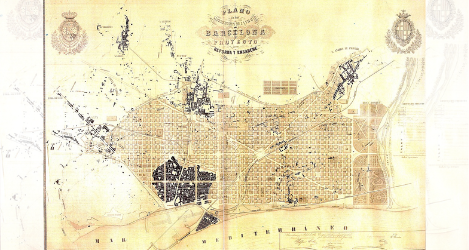
Main ideas of the Cerdà Plan: Grid design: square blocks (113 x 113 m), forming an orderly network to facilitate traffic. Corner chamfers: corners cut at 45º angles to improve visibility, vehicle turning, and create open urban spaces. Interior courtyards: each block was to include an open, green space for light, ventilation, and recreation. Wide, well-oriented streets: allowed for good ventilation and natural light. Equitable distribution of services: schools, markets, and hospitals were planned at regular intervals to ensure the well-being of all citizens.
![]()
What was achieved with the Cerdà Plan? The grid structure with regular blocks was respected. The chamfers, which today are an essential part of the urban landscape, were built. The wide, strategically oriented streets are preserved. Interior courtyards exist in almost every block, although not always as public spaces. The plan remains functional and relevant for modern mobility.
![]()
Iconic architecture and urban planning
Strolling through the Eixample Right is like opening a book on modernist architecture. Here you'll find some of Antoni Gaudí's masterpieces, such as Casa Batlló and, of course, the iconic Sagrada Familia. Also noteworthy are buildings by Josep Puig i Cadafalch (Casa de les Punxes) and Lluís Domènech i Montaner (Casa Thomas).
Other must-see places are:
Amatller House
Palace of the Baron of Quadras
Macaya House
Passeig de Sant Joan, a quiet avenue with parks, cafes and local atmosphere.
Gardens of the Torre de les Aigües, a hidden oasis in the middle of the Eixample block.
The design of the blocks with chamfered corners allows for better visibility at intersections and facilitates the passage of light and air. This unique design turns each corner into a small urban viewing point.
Culture and local life
Beyond the monuments, the Eixample Right is a vibrant neighborhood. It's home to designer boutiques, charming bookstores, historic markets like the Concepció market, and cafés with outdoor seating where you can enjoy a horchata or vermouth.
It's a place that exudes tranquility yet vibrancy. Ideal for families looking for security and amenities, and for groups of friends interested in local culture, cuisine, and architecture.
Curiosities and anecdotes
Did you know that the sharp corners of streets, the famous chamfers, were designed to make it easier for trams to turn?
Some streets change names halfway through their route: for example, Aragón Street becomes Consell de Cent in certain sections.
On Passeig de Gràcia, the modernist lampposts are also benches and are decorated with alchemical symbols.
The Sagrada Familia, still unfinished, has been financed exclusively by donations since its inception.
What to see and do: recommended walking route
We propose a walking route ideal for families and groups of friends:
Start at Plaça Catalunya
Walk along Passeig de Gràcia (Casa Batlló, Casa Amatller, Casa Milà/La Pedrera)
Stop at the Casa de les Punxes
Rest in the Mercat de la Concepció
Mallorca Street to the Sagrada Familia
Visit to the Plaza de la Sagrada Familia and its gardens
Rest in Plaça de Tetuan or the Gardens of the Torre de les Aigües
Return via Avenida Diagonal with hop-on hop-off
This route combines art, history, gastronomy, and moments to share.
![]()
The Eixample Right is much more than a central neighborhood. It is a testament to progress, art, and the Barcelona spirit. Its straight, elegant streets invite you to stroll, discover, and enjoy a different, more local, more authentic Barcelona.
Don't miss this wonderful documentary about the origins and evolution of Passeig de Gràcia. https://barcelonapaseodegracia.com/es/historia/ From Sensation Apartments Barcelona, we encourage you to explore it like a true local. Are you up for discovering its secrets?

Did you know that walking through Eixample Right is like traveling back in time between modernism and urban design? Barcelona is a city of unique neighborhoods, and Eixample Right is one of the most fascinating. Elegant, orderly, and full of life, this district not only houses some of the most impressive architectural gems of Catalan modernism, but also stories, curiosities, and places with soul. Are you ready to walk its streets like a true Barcelona native?
Brief history of the Eixample Right
In the mid-19th century, the city of Barcelona began to grow beyond its medieval walls. The person responsible for designing this expansion was Ildefons Cerdà, a visionary engineer who proposed a grid-like urban structure designed to improve mobility, hygiene, and urban living.

The Cerdà Plan: a revolutionary urban vision
The Cerdà Plan, designed in 1859 by engineer Ildefons Cerdà, was the basis for Barcelona's expansion beyond its ancient walls. Its goal was to create a healthier, more functional, and more accessible city, breaking away from the medieval structure of narrow, overcrowded streets.

Main ideas of the Cerdà Plan: Grid design: square blocks (113 x 113 m), forming an orderly network to facilitate traffic. Corner chamfers: corners cut at 45º angles to improve visibility, vehicle turning, and create open urban spaces. Interior courtyards: each block was to include an open, green space for light, ventilation, and recreation. Wide, well-oriented streets: allowed for good ventilation and natural light. Equitable distribution of services: schools, markets, and hospitals were planned at regular intervals to ensure the well-being of all citizens.

What was achieved with the Cerdà Plan? The grid structure with regular blocks was respected. The chamfers, which today are an essential part of the urban landscape, were built. The wide, strategically oriented streets are preserved. Interior courtyards exist in almost every block, although not always as public spaces. The plan remains functional and relevant for modern mobility.

Iconic architecture and urban planning
Strolling through the Eixample Right is like opening a book on modernist architecture. Here you'll find some of Antoni Gaudí's masterpieces, such as Casa Batlló and, of course, the iconic Sagrada Familia. Also noteworthy are buildings by Josep Puig i Cadafalch (Casa de les Punxes) and Lluís Domènech i Montaner (Casa Thomas).
Other must-see places are:
Amatller House
Palace of the Baron of Quadras
Macaya House
Passeig de Sant Joan, a quiet avenue with parks, cafes and local atmosphere.
Gardens of the Torre de les Aigües, a hidden oasis in the middle of the Eixample block.
The design of the blocks with chamfered corners allows for better visibility at intersections and facilitates the passage of light and air. This unique design turns each corner into a small urban viewing point.
Culture and local life
Beyond the monuments, the Eixample Right is a vibrant neighborhood. It's home to designer boutiques, charming bookstores, historic markets like the Concepció market, and cafés with outdoor seating where you can enjoy a horchata or vermouth.
It's a place that exudes tranquility yet vibrancy. Ideal for families looking for security and amenities, and for groups of friends interested in local culture, cuisine, and architecture.
Curiosities and anecdotes
Did you know that the sharp corners of streets, the famous chamfers, were designed to make it easier for trams to turn?
Some streets change names halfway through their route: for example, Aragón Street becomes Consell de Cent in certain sections.
On Passeig de Gràcia, the modernist lampposts are also benches and are decorated with alchemical symbols.
The Sagrada Familia, still unfinished, has been financed exclusively by donations since its inception.
What to see and do: recommended walking route
We propose a walking route ideal for families and groups of friends:
Start at Plaça Catalunya
Walk along Passeig de Gràcia (Casa Batlló, Casa Amatller, Casa Milà/La Pedrera)
Stop at the Casa de les Punxes
Rest in the Mercat de la Concepció
Mallorca Street to the Sagrada Familia
Visit to the Plaza de la Sagrada Familia and its gardens
Rest in Plaça de Tetuan or the Gardens of the Torre de les Aigües
Return via Avenida Diagonal with hop-on hop-off
This route combines art, history, gastronomy, and moments to share.

The Eixample Right is much more than a central neighborhood. It is a testament to progress, art, and the Barcelona spirit. Its straight, elegant streets invite you to stroll, discover, and enjoy a different, more local, more authentic Barcelona.
Don't miss this wonderful documentary about the origins and evolution of Passeig de Gràcia. https://barcelonapaseodegracia.com/es/historia/ From Sensation Apartments Barcelona, we encourage you to explore it like a true local. Are you up for discovering its secrets?

